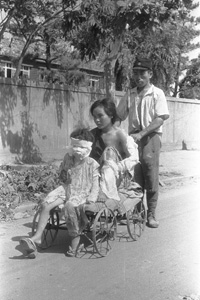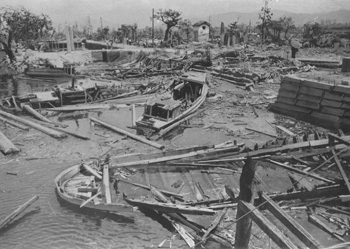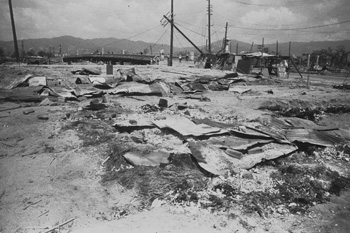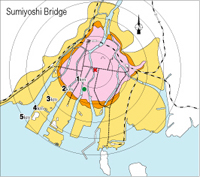| Family Returning from the Hospital |
 |
| 14 |
Family heading home after out-patient hospital treatment
Approx. 2,350m from the hypocenter, Minami-machi 2-chome
|
|
The photo shows the family going "home" after treatment, with the Hiroshima Regional Monopoly Bureau in the background. Burned on her left arm and both legs, the mother is unable to walk. The daughter (then, six years old) is burned on her left arm and face. Her bandaged head, her face entirely lathered with white ointment and so swollen she cannot see-all tug at the heart.
|
|
 |
 |
| 15 |
Corpse lying under tin sheet
Approx. 1,360m from the hypocenter, Kako-machi (now, Sumiyoshi-cho)
|
|
Many bodies floated to the Sumiyoshi Bridge, where they were pulled out. This photo shows one of these corpses. How to identify the age or gender of a hairless, swollen, and discolored corpse?
|
 |
The moorings next to the foot of Sumiyoshi Bridge
Approx. 1,290m from the hypocenter, Kako-machi (now, Sumiyoshi-cho)
|
|
The blast had splintered the boats, and pieces of smashed boats and wood floated downstream, jamming into the slips. The injured were brought to the foot of Sumiyoshi Bridge and carried by Army Marine Headquarters boats to Ujina or Ninoshima Island.
|
 |
| 16 |
|





